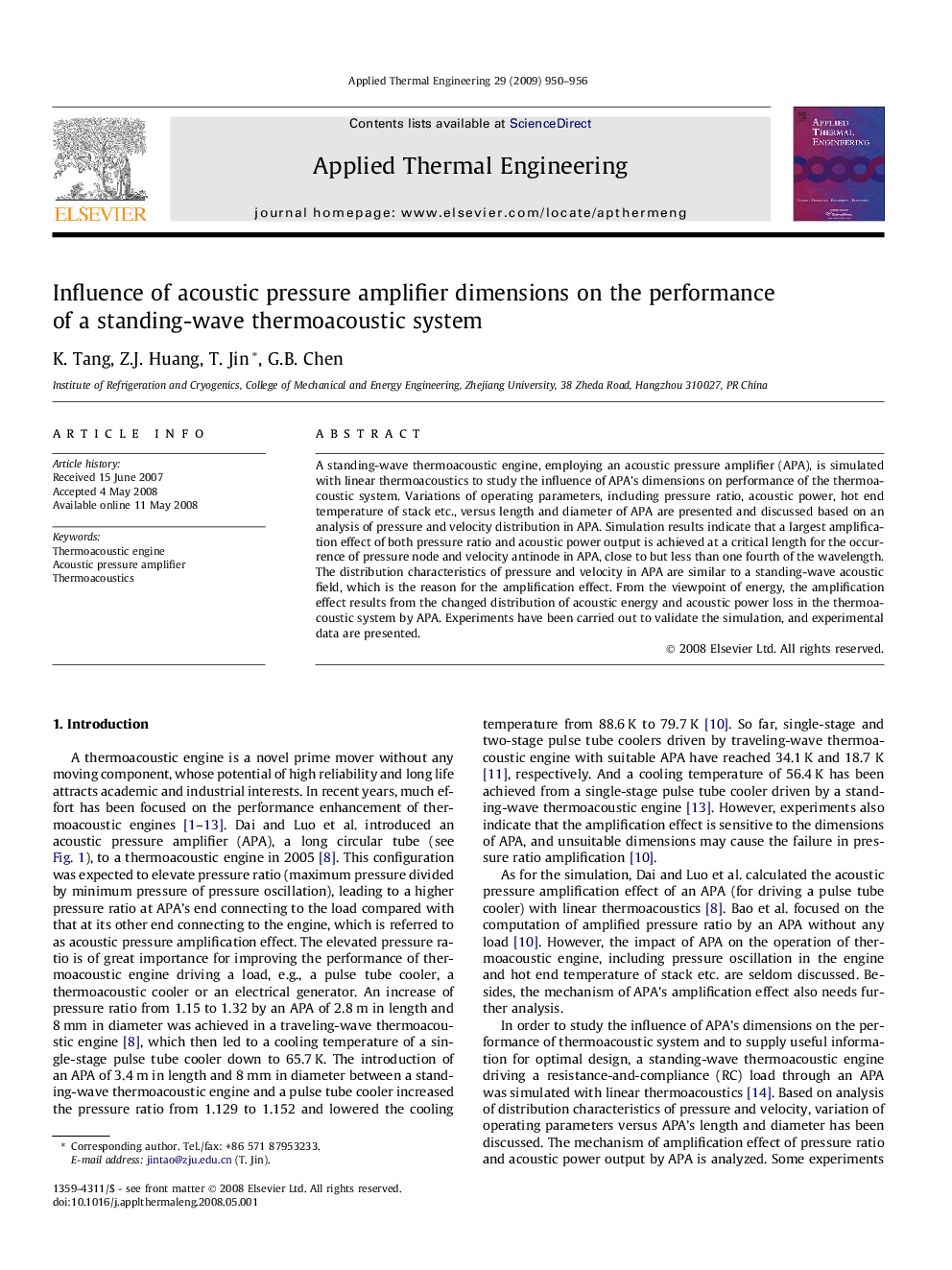| Article ID | Journal | Published Year | Pages | File Type |
|---|---|---|---|---|
| 648939 | Applied Thermal Engineering | 2009 | 7 Pages |
A standing-wave thermoacoustic engine, employing an acoustic pressure amplifier (APA), is simulated with linear thermoacoustics to study the influence of APA’s dimensions on performance of the thermoacoustic system. Variations of operating parameters, including pressure ratio, acoustic power, hot end temperature of stack etc., versus length and diameter of APA are presented and discussed based on an analysis of pressure and velocity distribution in APA. Simulation results indicate that a largest amplification effect of both pressure ratio and acoustic power output is achieved at a critical length for the occurrence of pressure node and velocity antinode in APA, close to but less than one fourth of the wavelength. The distribution characteristics of pressure and velocity in APA are similar to a standing-wave acoustic field, which is the reason for the amplification effect. From the viewpoint of energy, the amplification effect results from the changed distribution of acoustic energy and acoustic power loss in the thermoacoustic system by APA. Experiments have been carried out to validate the simulation, and experimental data are presented.
